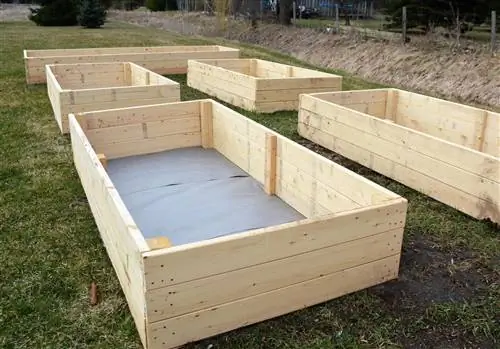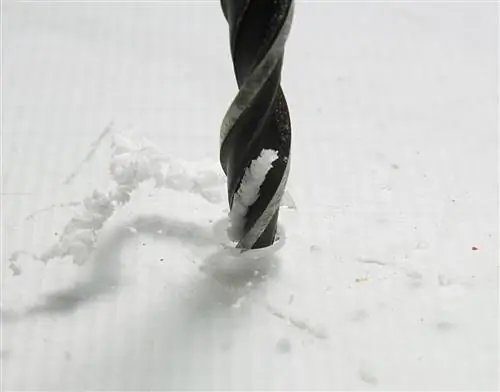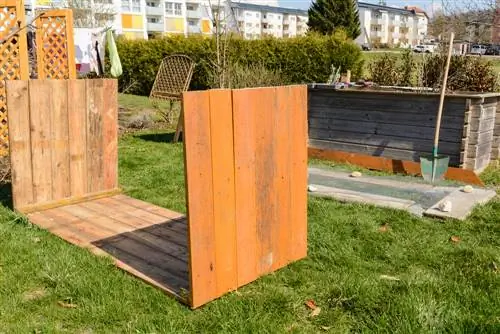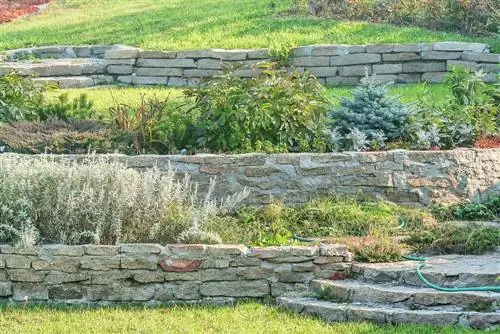- Author admin [email protected].
- Public 2023-12-16 16:46.
- Last modified 2025-06-01 06:02.
Of course you can only fill a raised bed with soil, but this only makes sense for very small or rather flat raised beds (such as table beds). Instead, raised beds should always have drainage if possible so that excess irrigation or rain water can drain away.
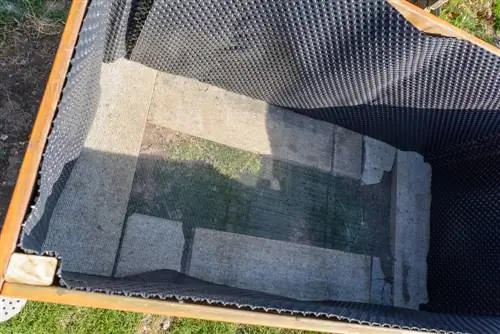
Why does a raised bed need drainage?
Drainage in raised beds is important to avoid waterlogging and root rot. Suitable materials for the drainage layer are hardwood stumps, gravel, gravel, chippings, sand or building rubble. The layer is covered with drainage fleece to prevent substrate particles from sludging in.
Why water drainage in raised beds is so important
Such a layer is particularly important if the raised bed is on a sealed surface such as a concrete slab or a paved yard. Excess water must be able to drain away unhindered, especially in winter, otherwise waterlogging will form. This in turn hinders the growth of the plants and causes the roots to rot and fungal diseases to spread. If a raised bed is only filled with soil, this makes it more difficult for water to drain away - the heavier the substrate, the more likely it is to compact. In addition, the garden soil does not usually consist of a thick layer of topsoil; here too, only the first 40 centimeters are fertile soil, followed by a layer of clay or sand - depending on the composition of the soil.
Which materials are suitable for drainage?
There are different ways to create a drainage system. With classic layering, which is mainly used for raised beds on loose soil, coarsely chopped branches and twigs as well as wood chips and bark mulch as the bottom layer ensure that water does not accumulate in the bed. However, these materials rot very quickly, so the bed contents can suddenly collapse within a few weeks to months. To prevent this, you can instead click
- thick, slowly rotting hardwood stumps
- Gravel, gravel, lava stone
- Gravel, sand
- Building rubble, smaller field stones
- or slabs or paving stones
fall back. Concrete slabs and paving stones, for example, are layered in such a way that gaps remain for water to drain away. Pour layers of sand, grit or gravel into the cavities. Even thick wooden stubs (e.g. oak, beech, larch or robinia are very suitable) need the gaps to be filled.
Creating a drainage layer - This is how it’s done
If the raised bed is open at the bottom, you must close it with a tightly meshed wire (such as rabbit wire (€14.00 on Amazon)) so that no vermin can enter from below. Pour the drainage layer on top, whereby fine-grained material such as sand, grit or gravel can simply be filled in with buckets. Coarser material is filled with finer bulk material and compacted. Place a drainage fleece over the drainage layer, this prevents substrate particles from getting into the gaps in the drainage.
Tip
Raised beds that are sealed at the bottom must have drainage holes in the lower area on the sides of the walls or in the foundation. If you have a terrace with a slope, you must set up the raised bed so that the water can flow away from the raised bed and does not stop in front of the bed.
Additional information on ergonomic gardening is compiled for you in this article.


